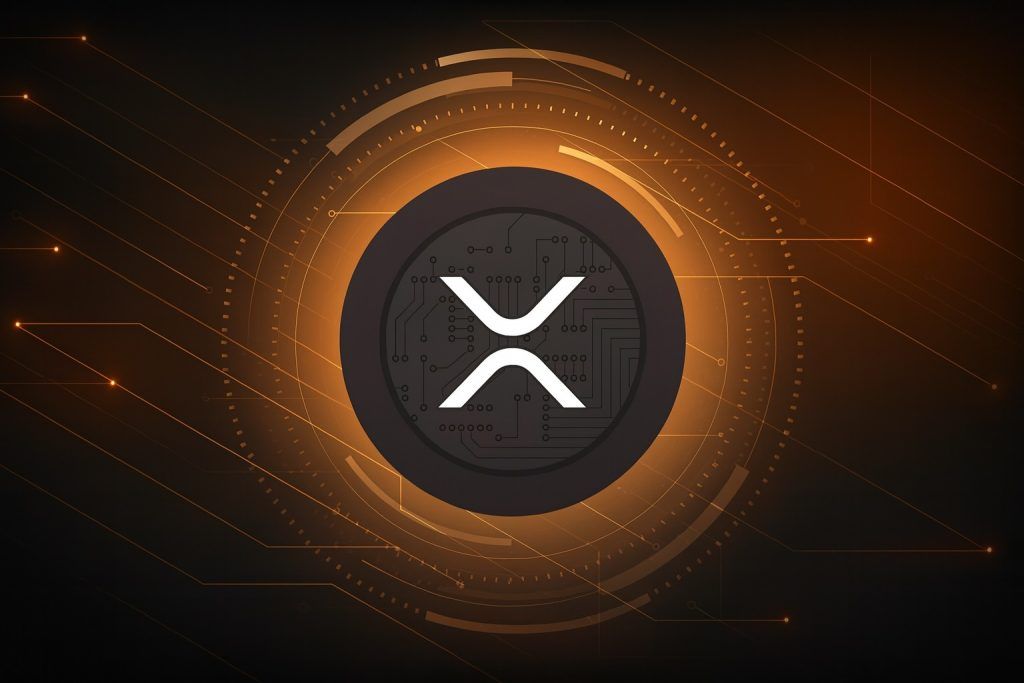- Ethereum’s current price: ~ $4,150 on Oct 13, 2025 [1] [2], up about 8.7% in the last 24h [3] (after a recent tumble) but down roughly 15–16% over the past week [4].
- Recent volatility: A sudden US–China trade tariff scare on Oct 10 sent ETH crashing ~7% intraday (liquidating ~$235M in ETH longs) [5]. It rebounded into Oct 13 as markets stabilized.
- “Uptober” rally: Earlier in October, ETH surged near $4,753 [6] (its highest levels in months) thanks to massive inflows. Spot ETH ETFs saw roughly $1.5 billion of net inflows in the first week of October [7] (and about $3.87 billion in August [8]), boosting demand.
- Market signals: On-chain data show exchange ETH reserves at nine-year lows and decentralized-exchange activity up ~47% [9], indicating strong accumulation. Prediction markets currently show ~80% odds of ETH reaching $5,000 before any sharp pullback [10].
- Comparative moves: Ethereum’s swings have outpaced Bitcoin’s. In the Oct 10 crash, ETH fell ~7% vs. BTC’s ~3.5% [11]. By Oct 13, ETH (+8.7%) was one of the top gainers, compared to BTC +2.9%, BNB +14.9%, and DOGE +10% [12] [13].
- Key technical levels: Analysts note support around $4,000–$4,400 and resistance near ~$4,800 [14] [15]. A convincing break above $4,800 could open the door to $5,000+, while failure to hold support might retest ~$4,000.
- Outlook: Ethereum’s fundamentals remain solid – e.g. upcoming “Fusaka” sharding upgrade (Nov 2025) to boost scalability [16] [17] – but short-term newsflow and macro risks (geopolitics, Fed policy) are keeping traders cautious.
Ethereum Price Today (Oct 13, 2025)
As of Oct 13, 2025, Ethereum is trading in the mid-$4,000 range. Investing.com reports ETH closed around $4,148.11 on Oct 13 [18] (with an intraday high ~$4,208 and low ~$4,118) after rebounding from earlier weakness. CryptoNews likewise notes ETH at about $4,152 on Monday morning [19], roughly 8.7% higher than 24 hours prior. This jump followed a painful weekend sell-off; over the past week ETH is down about 15–16% [20]. By comparison, BTC has also recovered (up ~2.9% on Oct 13 [21]) but with a smaller move than ETH.
In broad terms, Ethereum (the world’s second-largest cryptocurrency) remains below its early-October highs (~$4,750) and well under its late-August all-time peak (~$4,946). Year-over-year ETH is still positive, up ~54% from Oct 2024 [22]. The current bounce has been supported by a calmer market: CryptoNews reports that on Oct 13, 97 of the top 100 coins were rising, with ETH among the biggest gainers [23].
Recent Market News: Uptober Rally and Trade-Tariff Crash
Ethereum’s price moves in early October were driven by a wave of optimism (“Uptober”) followed by a sharp geopolitical shock. In late September and early October, ETH climbed strongly. By Oct 7 it had rebounded from a $3,868 low (set after a mid-September dip) and briefly pierced $4,600–4,700 [24]. Ts2.Tech reports that ETH even hit around $4,753 early in the week [25] – within ~7% of its late-August all-time high. This rally was fueled by institutional inflows: the first week of October saw roughly $1.5 billion of net inflows into spot ETH ETFs [26] (and by mid-October total ETF holdings approached $30 billion [27]). Commentators dubbed the surge a “retest of $5K” and saw Ethereum gaining “Wall Street attention” as a regulated token vehicle.
That picture abruptly changed on Oct 10 when former President Trump announced an unexpected 100% tariff on Chinese imports. This renewed U.S.–China trade tensions sparked a crypto crash across the board. According to CoinDesk via Ts2.Tech, Bitcoin fell about 3.5%, while Ethereum plunged ~7% intraday [28] – its worst day since late September. ETH briefly slid below $4,100 (and even hit ~$3,510 on some exchanges) before buyers stepped in [29] [30]. In that move roughly $600 million of leveraged crypto positions were liquidated, including ~$235M in ETH longs [31] [32].
Crypto analysts say the crash was a classic “leverage purge.” Derive.xyz’s Nick Forster explains that the combination of trade-war fear and thin order books led to “a self-reinforcing cascade of liquidations” [33]. Nic Puckrin of The Coin Bureau warned that months of ETF-driven enthusiasm had “lulled investors into a false sense of security” – meaning the market was vulnerable to shocks [34]. Indeed, at the worst point ETH’s drop was roughly double Bitcoin’s [35]. Most major altcoins also fell 6–8% that day (Solana, Cardano, Dogecoin, etc.) [36].
By Oct 13 the extreme volatility had settled. All those liquidated longs are gone, and leverage is much lower (tradingview notes crypto funding rates hit their lowest since 2022, indicating a reset). Ethereum’s recovery has been underpinned by its still-strong fundamentals (see below). As CryptoNews summarizes: “Many blue-chip tokens have seen a strong rebound – including Ethereum, which is looking particularly strong back above $4,000” [37]. On Monday ETH has climbed back above $4,150, helped by fresh demand and an overall crypto market gaining ~4% total cap [38] [39].
Institutional Flows & Fundamental Drivers
Institutional interest remains a key narrative for Ethereum. Spot Ethereum ETFs, launched in mid-2025, have attracted huge capital. Cointelegraph reports that $3.87 billion flowed into ETH ETFs in August alone [40] – far exceeding Bitcoin ETF inflows over the same period. By early October, total assets in these funds were ~5% of Ethereum’s market cap [41]. Such flows pull ETH off exchanges (contributing to the nine-year low in exchange reserves [42]) and have coincided with price rallies: for example, record single-day ETF inflows in July and August preceded tests of the $5K level [43].
Major firms also hold ETH on their balance sheets. Nasdaq-listed BitMine Immersion publicly revealed it amassed 2.83 million ETH (~2% of supply) by Oct 5 [44]. Many analysts note that with most ETH staking (see below) and ETFs buying, few coins are left to sell. This is backed by data: per Ts2.Tech, exchange reserves are near nine-year lows and DEX (decentralized exchange) trading volume jumped ~47% recently [45] – signals of ongoing demand and liquidity. CryptoQuant also flagged historic outflows from exchanges in recent weeks.
Ethereum’s network fundamentals remain bullish. Its annual issuance rate has plummeted since the 2022 “Merge” (to ~0.97M ETH/year from 4.9M) while the fee-burning EIP-1559 mechanism destroys roughly 1.3% of supply annually (about 1.99M ETH burned since activation) [46]. Around 35 million ETH (29% of total supply) are staked, effectively locking them up [47]. This deflationary issuance framework gives ETH “ultrasound money” characteristics, as detailed by analysts [48] [49]. New protocol upgrades also improve its use cases: for instance, the May 2025 “Pectra” update raised staking limits and added smart-contract features, while the upcoming “Fusaka” hard fork (slated for late November) will implement sharding to greatly boost throughput [50] [51]. Coindesk notes Fusaka will cut node costs and slash rollup fees, further strengthening Ethereum’s scalability and institutional appeal [52].
Regulatory developments have been gentle. In mid-2025 the U.S. CLARITY Act reportedly classified ETH as a utility token (unlike Bitcoin, which remains a commodity), easing ETF approvals [53]. The global narrative on energy use also favors ETH (its PoS chain uses 99.9% less energy than Bitcoin’s proof-of-work [54]). In sum, many fund managers see Ethereum as a deflationary settlement layer poised for long-term growth [55] [56].
Ethereum vs. Other Cryptocurrencies
Ethereum’s recent moves have contrasted with those of Bitcoin and other altcoins. As noted, during the Oct 10 shock ETH’s drop was steeper than BTC’s [57], reflecting its higher volatility. This trade-off often works the other way in rallies: in early October both BTC and ETH soared, but many altcoins (Solana, XRP, etc.) also outperformed BTC in the weeks prior. For context, BTC set a new all-time high above $125,000 in early October [58], roughly paralleling ETH’s jump above $4,500 [59].
However, over the latest bounce ETH has outpaced Bitcoin. On Oct 13, top-10 crypto movers included ETH (+8.7% to ~$4,152) and Binance Coin (+14.9% to $1,318) [60], whereas BTC gained only +2.9% [61]. Dogecoin also jumped (+10%) on meme-coin momentum [62]. In the broader top 100, 97 coins were up on Oct 13 [63]. The only major underperformer was Tron (+2.2%) [64]. These patterns suggest that while ETH remains second in market cap, its price action has been more swingy than Bitcoin’s – powering higher in rallies and falling harder in crashes [65] [66].
Technical Analysis
Technically, analysts point to a descending channel since the August peak (~$4,956) [67]. A ZebPay report (Oct 7) showed ETH had rebounded from ~$3,868 and was testing the channel’s upper trendline near $4,800 [68] [69]. According to that view, a decisive close above ~$4,800 (with strong volume) could break the downtrend and target ~$5,000 or higher [70] [71]. Conversely, failure to break out would likely see ETH pull back toward $4,400 or even retest $4,000 support [72] [73].
As of Oct 13, ETH is in a short-term uptrend off the lows, but it still faces several hurdles. On the hourly/daily charts, the $4,200–4,300 zone is immediate resistance (it capped Monday’s rally). The 50-day moving average (around $4,300) could also act as a magnet. If $4,300 is cleared, the next targets are roughly $4,500 (recent swing high) and then the channel top near $4,800. On the downside, $4,000–4,100 is key support – it’s both last week’s low range and near the 200-day MA. Loss of that level could swing sentiment more bearish. Indicators like RSI and MACD on daily charts have turned up from oversold levels, suggesting momentum is back – but the uneven price swings mean technical signals must be read cautiously.
In summary, the technical outlook is neutral-to-cautious. Key levels: $4,000/$4,100 (support), $4,300–4,500 (near-term resistance), and ~$4,800 (major resistance). A sustained move above $4,800–5,000 would shift the pattern bullish; otherwise ETH may remain range-bound into the end of October.
Expert Commentary and Forecast
Experts are split on where Ethereum goes from here. Some analysts are bullish on the medium term: Fundstrat’s Mark Newton recently predicted ETH could hit $5,500 by mid-October [74], banking on the bounce and seasonality. Standard Chartered’s team is even more optimistic, forecasting ETH around $7,500 by end-2025 [75] based on institutional demand and network upgrades. These targets, if reached, would set new highs.
Others caution a more modest path. Citigroup’s analysts have a conservative $4,300 year-end estimate [76], expecting that macro headwinds (rate hikes) will cap gains. Technical price models (e.g. Changelly’s algorithm) recently suggested a small rebound to ~$3,930 by Oct 14 [77], in line with the current bounce but far from drastic. Market sentiment measures are in the neutral-to-bearish zone (Crypto Fear & Greed index ~24 “Extreme Fear”) which often precedes rallies but also warns of volatility.
For the short term, traders see $4,500 as a key upside pivot. Trading desks note that Ethereum futures and options markets have largely reset: the recent liquidation wave flushed most overleveraged longs, meaning any new rallies will require fresh buying. Some on-chain options data (OKX etc.) hint that ETH is likely to trade sideways-to-up in the next few days, barring new shocks. If geopolitical risks recede and US markets calm, ETH could revisit $4,200–4,400. However, renewed sell-offs (e.g. if Fed pivots to more hawkish policy or another shock emerges) could easily retest $4,000.
Longer term, the consensus is broadly positive. The deflationary supply framework (staking and burning) and network upgrades give Ethereum a stronger fundamental base than in past cycles [78] [79]. Institutional adoption is still in early innings; large spikes of capital (the August/July inflows, plus corporate treasuries like BitMine) could reemerge. If Ethereum’s planned “Fusaka” upgrade in November succeeds, on-chain analysts believe gas fees will fall and adoption of Ethereum rollups will accelerate, potentially supporting another leg up in price. A bullish scenario would see ETH eventually challenge its late-2025 forecasts ($5K+). In fact, prediction markets suggest an 80% probability of hitting $5,000 before any 20% correction [80].
That said, risks remain. Crypto veteran Robert Kiyosaki and others have warned of macro downturns, which could drag all risk assets lower. Regulatory changes (e.g. a reversal of the CLARITY Act or new restrictions on crypto trading) could also spoil the party. High inflation or a stronger dollar might make commodities and stocks more attractive than crypto.
In summary, Ethereum is at a crossroads. It has shaken off last week’s mini-crash and shows bullish on-chain signs, but must clear several technical hurdles to regain its recent highs. The next few trading days (Oct 14–17) will be telling: a hold above $4,200 could energize bulls toward $4,500–4,800, while a drop below $4,000 might extend the correction. Over the next several months, fundamentals (ETF flows, staking, upgrades) argue for higher prices, but patience and risk management will be essential.
Sources: Up-to-date price data from Investing.com and CryptoNews [81] [82]; market analysis and news from TechStock² (ts2.tech) [83] [84], CoinDesk [85], CryptoBriefing [86] and CryptoNews [87] [88]; institutional flow data from Cointelegraph [89]; on-chain insights from AInvest [90] [91]; technical levels from ZebPay [92] [93], etc.
References
1. www.investing.com, 2. cryptonews.com, 3. cryptonews.com, 4. ts2.tech, 5. ts2.tech, 6. ts2.tech, 7. ts2.tech, 8. cointelegraph.com, 9. ts2.tech, 10. ts2.tech, 11. ts2.tech, 12. cryptonews.com, 13. cryptonews.com, 14. zebpay.com, 15. zebpay.com, 16. ts2.tech, 17. www.coindesk.com, 18. www.investing.com, 19. cryptonews.com, 20. ts2.tech, 21. cryptonews.com, 22. ycharts.com, 23. cryptonews.com, 24. zebpay.com, 25. ts2.tech, 26. ts2.tech, 27. cointelegraph.com, 28. ts2.tech, 29. ts2.tech, 30. ts2.tech, 31. ts2.tech, 32. ts2.tech, 33. cryptonews.com, 34. cryptonews.com, 35. ts2.tech, 36. ts2.tech, 37. cryptonews.com, 38. cryptonews.com, 39. cryptonews.com, 40. cointelegraph.com, 41. cointelegraph.com, 42. ts2.tech, 43. cointelegraph.com, 44. ts2.tech, 45. ts2.tech, 46. www.ainvest.com, 47. www.ainvest.com, 48. www.ainvest.com, 49. www.ainvest.com, 50. ts2.tech, 51. www.coindesk.com, 52. www.coindesk.com, 53. www.ainvest.com, 54. www.ainvest.com, 55. www.ainvest.com, 56. www.ainvest.com, 57. ts2.tech, 58. ts2.tech, 59. ts2.tech, 60. cryptonews.com, 61. cryptonews.com, 62. cryptonews.com, 63. cryptonews.com, 64. cryptonews.com, 65. ts2.tech, 66. ts2.tech, 67. zebpay.com, 68. zebpay.com, 69. zebpay.com, 70. zebpay.com, 71. zebpay.com, 72. zebpay.com, 73. zebpay.com, 74. ts2.tech, 75. ts2.tech, 76. ts2.tech, 77. changelly.com, 78. www.ainvest.com, 79. www.ainvest.com, 80. ts2.tech, 81. www.investing.com, 82. cryptonews.com, 83. ts2.tech, 84. ts2.tech, 85. www.coindesk.com, 86. cryptobriefing.com, 87. cryptonews.com, 88. cryptonews.com, 89. cointelegraph.com, 90. www.ainvest.com, 91. www.ainvest.com, 92. zebpay.com, 93. zebpay.com










